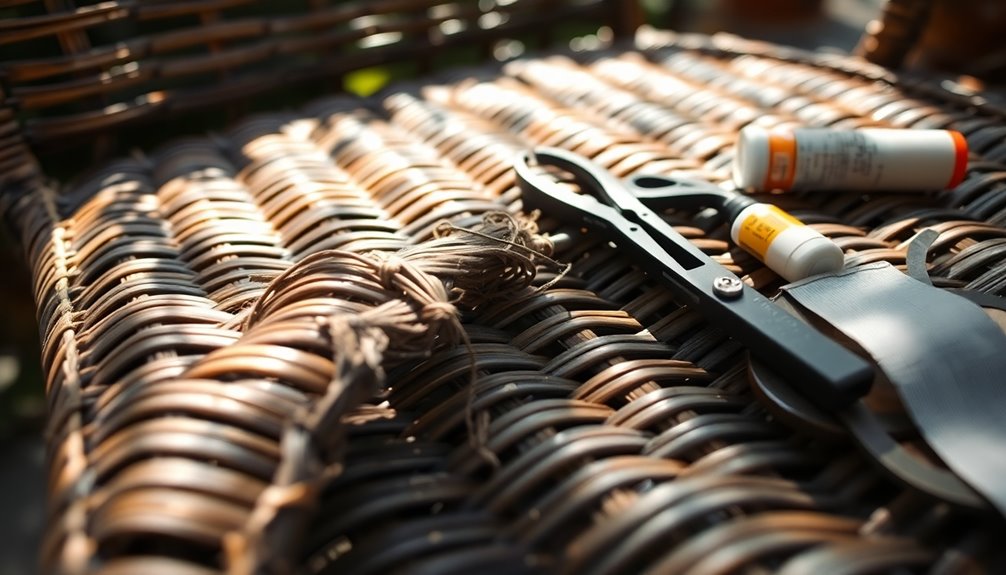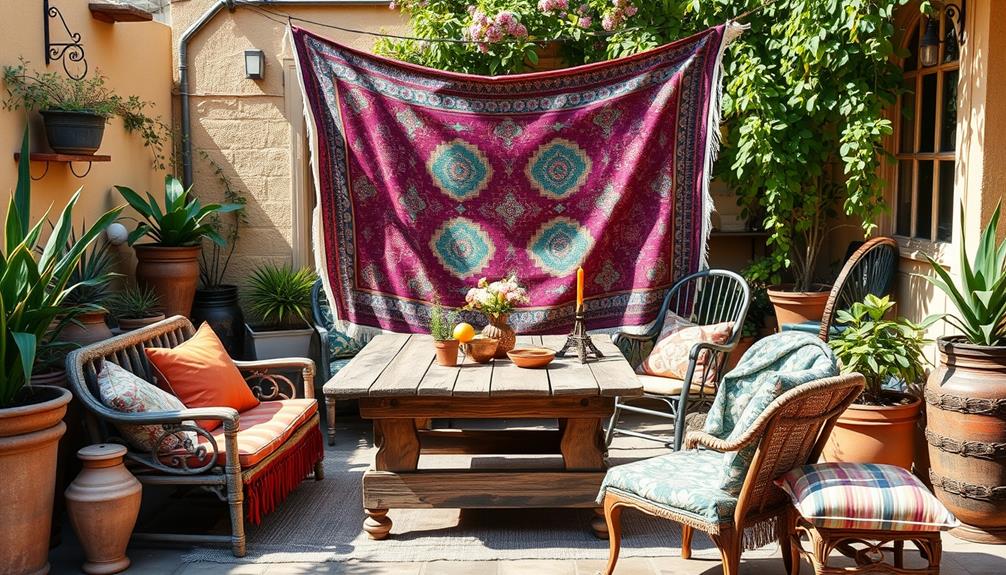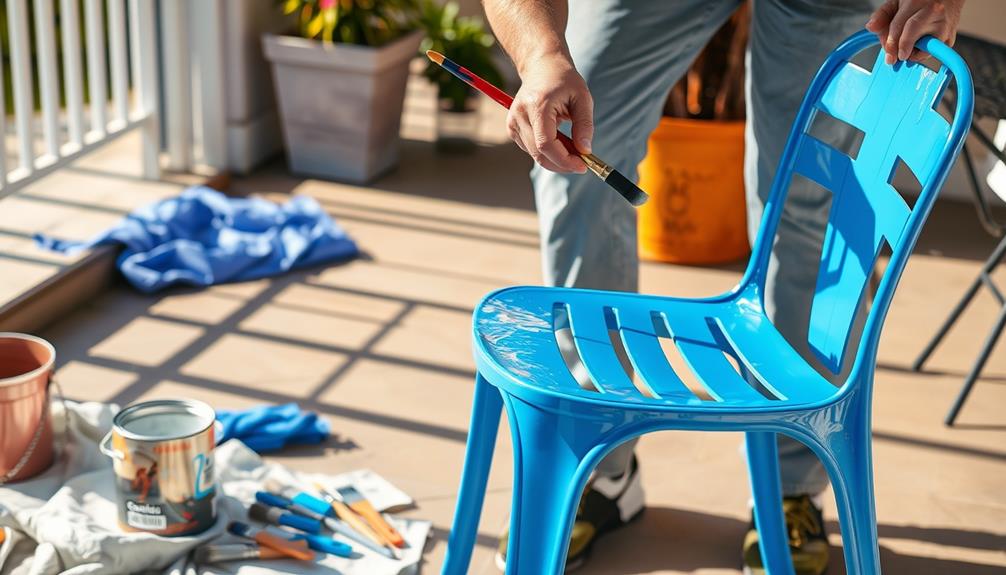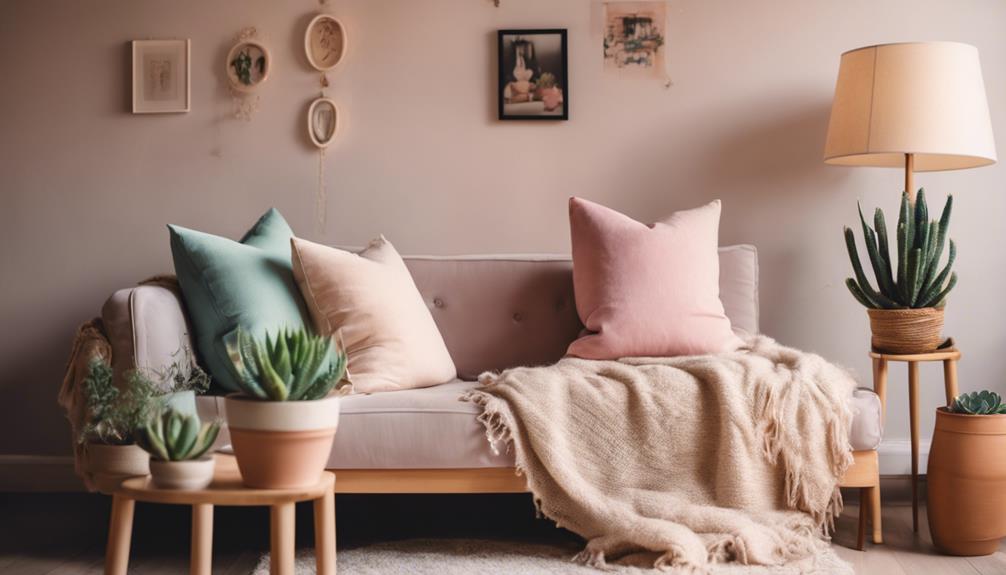To move furniture up stairs, start by measuring your items and assessing the staircase for obstacles. Disassemble larger pieces to reduce their weight, and clear pathways for smooth movement. Use a hand truck or stair climbing dolly to help you lift and navigate. Lift with your legs, keeping your back straight, and coordinate movements with your helpers. If the furniture's too heavy or the stairs are tight, consider hiring professionals to handle it safely. With the right techniques and tools, you can avoid damage and make the process easier. Curious about specific strategies? There's more to explore!
Key Takeaways
- Measure furniture dimensions and stairway specifications to ensure a proper fit before moving items upstairs.
- Disassemble large furniture into manageable parts to reduce weight and ease navigation through tight spaces.
- Use a hand truck or stair climbing dolly to transport bulky items safely while minimizing physical strain.
- Employ proper lifting techniques by using your legs, keeping your back straight, and coordinating movements with helpers.
- Consider hiring professionals for heavy or complex moves, especially in tight corners or for valuable items.
Planning and Preparation
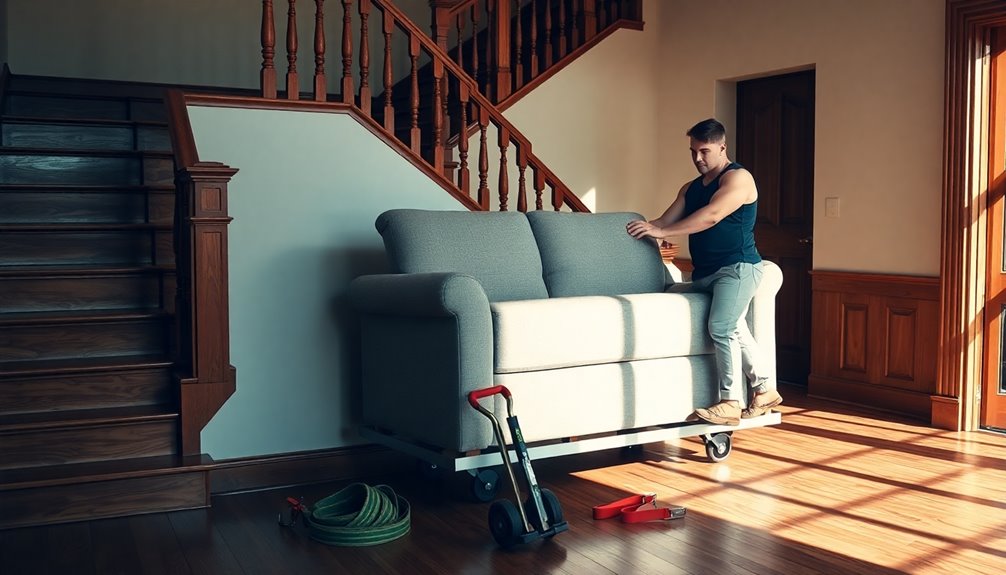
Before you tackle moving furniture up stairs, it's crucial to plan and prepare effectively. Start by measuring the dimensions of your furniture, including its weight and size. Don't forget to evaluate the staircase for potential obstacles like narrow passages, steep inclines, and any irregularities that could complicate the move. Check the width of doorways and the height of ceilings, ensuring your furniture can fit through without a hitch.
Next, assess the material of your stairs, whether wood, marble, or concrete, to anticipate any potential damage. Clear the pathway by measuring doorways and hallways, ensuring nothing obstructs your route. Remove any doors from hinges to widen those narrow spaces, and secure rugs and electrical cords to prevent tripping hazards.
Prepare your furniture by emptying it to reduce weight and prevent contents from falling out. Disassemble as much as you can, removing cushions, drawers, and other detachable elements. Finally, gather the necessary equipment, including a hand truck, moving straps, and protective blankets to safeguard both the furniture and stairs during the move. With everything organized, you'll be ready to tackle the challenge ahead. Additionally, using safe lifting techniques can help prevent injuries during the move.
Deciding Furniture Position
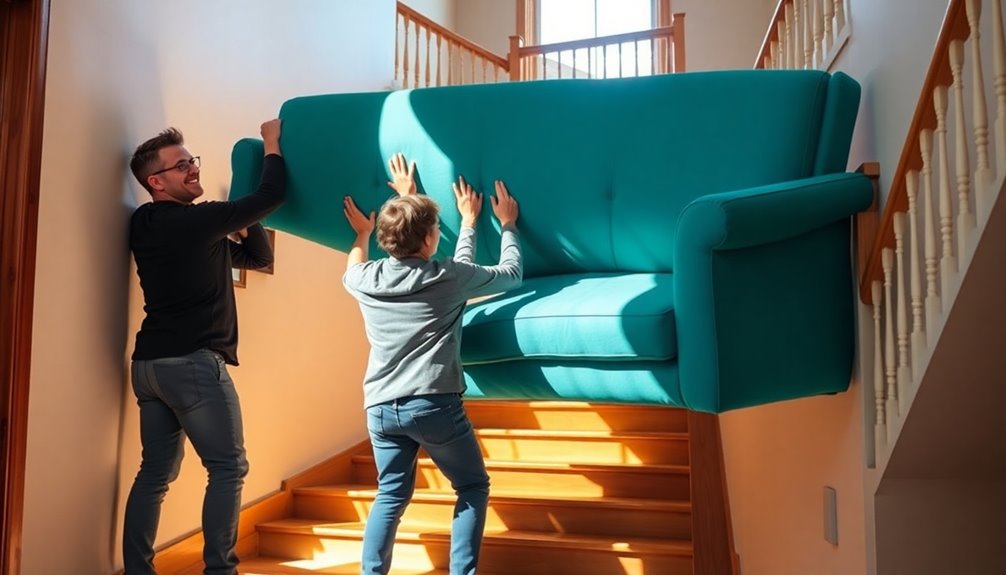
Deciding the right position for your furniture can make all the difference when moving it up stairs. Start by measuring the width of the stairs, any corners, and the ceiling height. Assess the type of staircase—whether it's straight, helical, or spiral. This knowledge helps you choose the best way to position your furniture.
For long or tall items, position them horizontally, parallel to the stairs, to avoid getting stuck against the ceiling. If your furniture is under 6.5 feet high, keep it vertical but slightly tilted for stability. When navigating corners, consider tilting the piece at a 45-degree angle or moving it diagonally to fit. Additionally, ensure that the furniture scale and location are suitable for the stairway to facilitate smooth movement and avoid obstruction.
Necessary Equipment and Tools
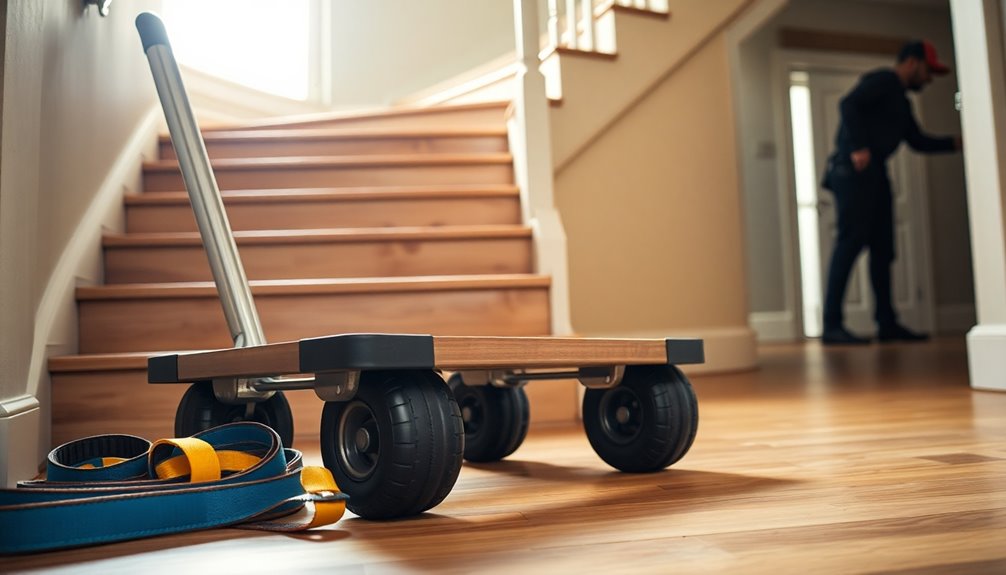
When moving furniture up stairs, having the right equipment and tools makes all the difference in ensuring a smooth process. Start with a hand truck, as its two wheels allow you to leverage bulky items easily, navigating stairs and tight corners. For heavier pieces, consider an appliance dolly, which comes equipped with straps to secure your load. A stair climbing dolly is another excellent choice; it uses a rotating arm to lift furniture, reducing your physical strain. Additionally, it's important to assess the staircase type to anticipate any challenges you may encounter during the move.
Don't forget safety equipment. Moving straps secure furniture to dollies, preventing accidents during transport. Tie down straps maintain balance while navigating stairs, and lifting straps help distribute weight, easing the burden on your back.
Additionally, furniture sliders and rollers make it easier to move items across floors without lifting. If you're dealing with extremely heavy pieces, an electric mini lifter can save you from injury. Lastly, having helpers is crucial—good communication among your team ensures everyone is on the same page. With the right tools and teamwork, you can tackle those stairs confidently!
Disassembly and Emptying Process
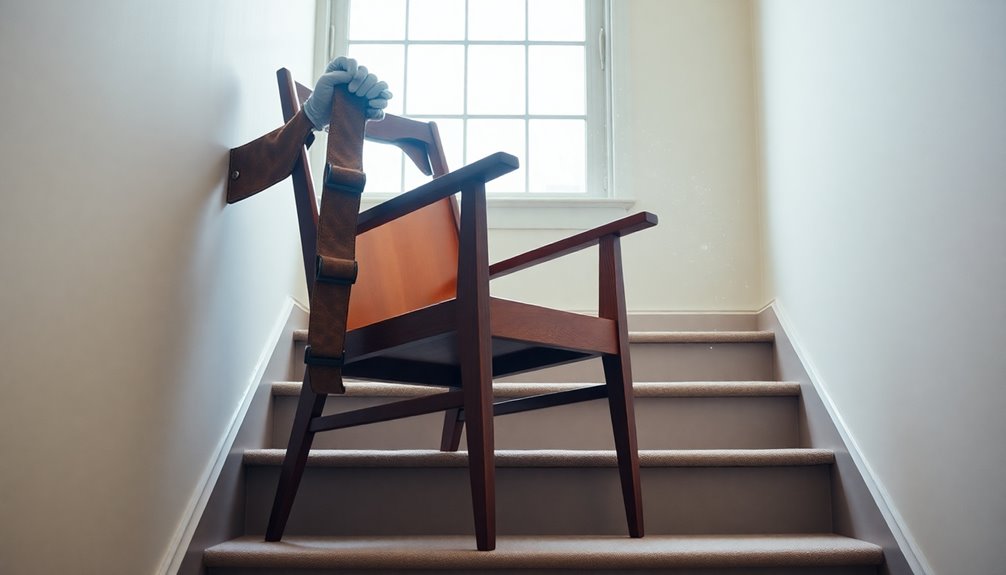
To ensure a smoother move, start by disassembling larger furniture pieces to reduce their size and weight. Measure your furniture and stairway dimensions first to see if disassembly is necessary. Remove furniture legs from sofas, dressers, and tables. For beds, separate the mattress and box spring from the frame. Don't forget to take out drawers, shelves, and any detachable elements from cabinets and bookshelves.
Next, focus on removing fragile parts. Take off mirrors or glass pieces, wrapping them in blankets and bubble wrap, labeling them as "fragile." Unscrew hinges to remove doors, securing them in blankets, and remove any protruding elements that could snag. Use painter's tape to secure any remaining doors. It's also wise to consider the potential benefits of air quality improvement while moving, as dust and allergens can accumulate during the process.
Now, empty the furniture to lessen its weight. Remove cushions from couches and pack them separately. Take off sheets and pillows from beds before disassembling the frame. Ensure all drawers and compartments are cleared of items that could shift or fall during the move.
Lastly, label all disassembled parts and keep them organized. Use resealable bags for nails and bolts, and track which parts belong to which furniture item for easy reassembly. Additionally, consider using resealable bags to keep small hardware organized and prevent loss during the moving process. Moreover, taking detailed pictures of the furniture before you disassemble it can serve as a helpful reference for reassembly. If you’re planning to give your furniture a makeover, you might also want to research how to choose upholstery fabric that complements your new decor. Ensuring that all parts are accounted for will ultimately make your moving experience smoother and allow you to enjoy your furniture in its new home without any hiccups.
Lifting Techniques
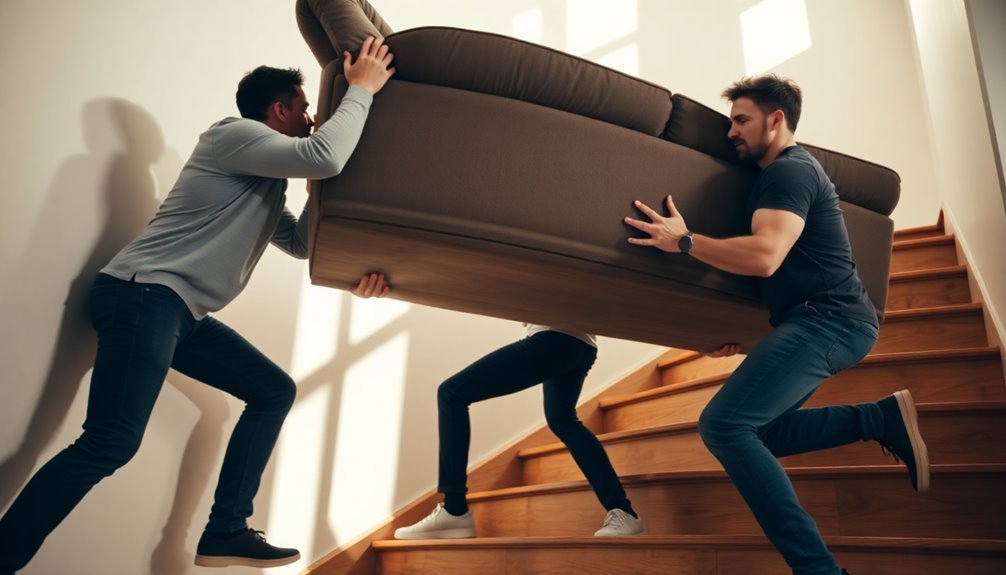
Proper lifting techniques are crucial for safely moving heavy furniture up stairs. Always lift with your legs, not your back, to minimize injury risks. Keep your back straight and bend your knees to maintain control and reduce strain. If you're working with a partner, coordinate your movements with a simple countdown before lifting to ensure harmony.
Before you start, check the furniture's dimensions and the staircase to plan your lifting route. Continuous communication is vital, especially when navigating turns or adjusting your pace. Consider using a hand truck for added leverage; secure the furniture evenly on it and tilt the truck when ascending the stairs. A second person can guide you in tight spaces. Additionally, engaging a professional moving service can provide efficient moving solutions for heavy furniture, ensuring safety and effectiveness.
If you opt for shoulder dollies, ensure both lifters are of similar height to distribute weight evenly. Position the straps under the furniture and lift together, sharing the load. Lastly, you can use the sliding and pivot technique with furniture sliders or thick blankets to reduce friction. Align the furniture carefully with the staircase before attempting to move it upward, protecting your floors and stairs from scratches.
Moving Strategies
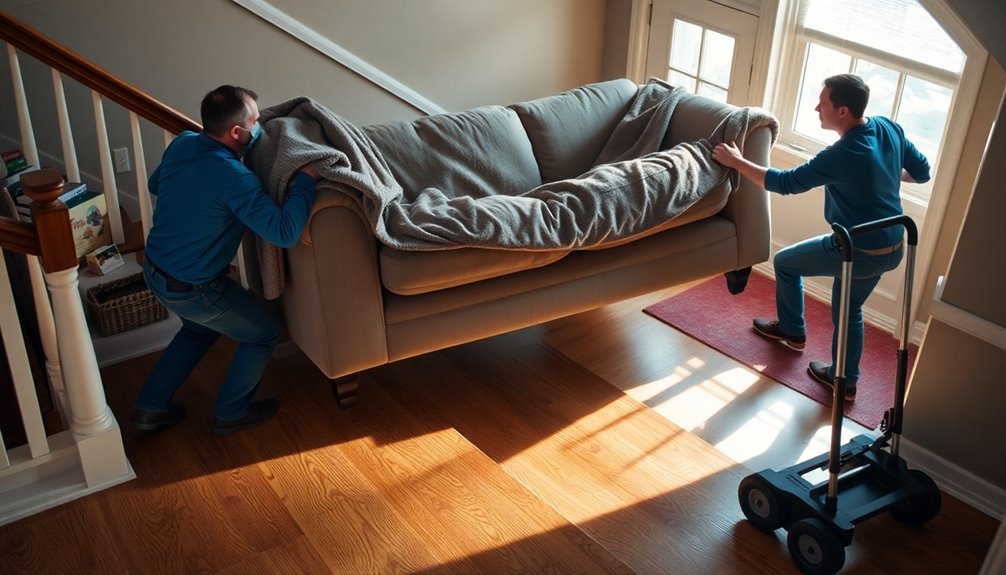
Moving furniture up stairs can feel daunting, but with the right strategies in place, you can tackle the challenge efficiently. Start by measuring both your furniture and stairs. Knowing the type, length, and width of the stairs helps you plan better. For long or tall items, position them horizontally to prevent getting stuck. If the furniture is under 2 meters high, keep it vertical for easier maneuvering.
Using specialized equipment can make a huge difference. Consider an electric stair climber or a stair climbing robot for heavy pieces, as they are designed to handle heavy items safely without the risk of injury. A hand truck can provide secure leverage, while furniture sliders help protect your floors and ease movement.
Prepare your path by placing sliders or blankets under the furniture, and cover banisters and corners with padding to avoid damage. Remove any loose parts from the furniture to simplify the process. Make sure to secure everything to hand trucks or dollies to prevent shifts during transit. Don't forget to communicate with your helpers and take breaks as needed when setting furniture down on stairs. These strategies will make your move smoother and more efficient.
Safety Considerations
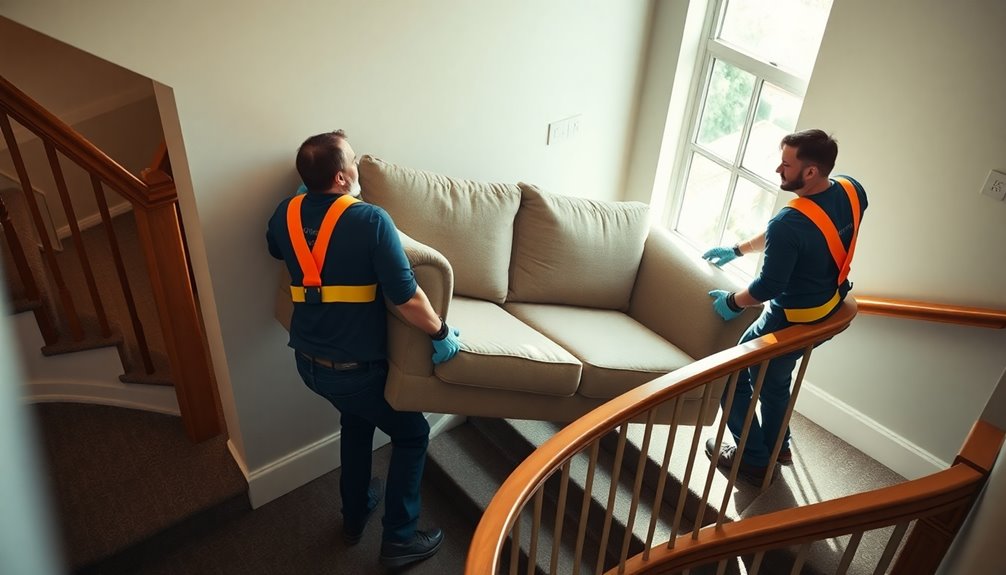
When tackling the challenge of moving furniture up stairs, prioritizing safety can make all the difference. Start by assessing your environment. Measure the width and length of the stairwell, including any landings, to ensure your furniture fits. Check ceiling heights and doorframes so you don't get stuck. Clear the path of any tripping hazards, and be cautious of slippery surfaces or uneven flooring. Additionally, ensure that your furniture is properly maintained, as air purifiers can help reduce allergens and improve the overall environment in your home.
Next, use proper lifting techniques. Bend at your knees, not your waist, to distribute weight evenly and reduce strain on your back. Keep the item close to your body and lift with your legs and core. Avoid twisting while carrying heavy objects. If possible, engage in team lifting with coordinated movements to prevent injury or damage. Safety measures are essential to protect both the mover and the furniture during this process.
Utilizing the right equipment can also enhance safety. Consider using a motorized stair climber for bulky items and furniture sliders to protect your floors. A dolly can help, too—strap items securely before moving. Finally, wear comfortable, non-slip shoes for better footing, and ensure clear communication with your moving partners. If the task seems daunting, don't hesitate to seek professional help to avoid injuries.
When to Hire Professionals
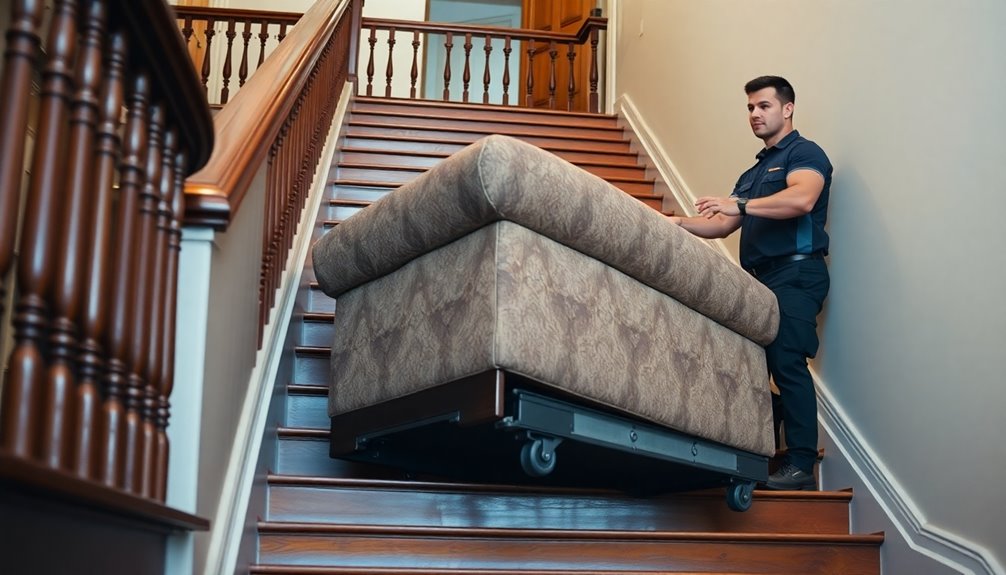
Deciding whether to hire professionals for moving furniture up stairs can save you time, effort, and potential headaches. If you're moving to an upstairs apartment without an elevator, or if you have exceptionally heavy or valuable items, it's wise to consider professional help. Tight corners, narrow passages, and complex staircases can complicate your move, especially with multiple large items.
If you lack enough friends or family to assist, or if you need specialized equipment like stair-climbing dollies, hiring professionals is a smart choice. They possess the expertise to safely disassemble furniture that won't fit up the stairs, minimizing the risk of damage to your belongings and your home. Additionally, their experience also helps ensure reduced risk of damage to both your items and the property itself.
The risk of personal injury is another factor; moving heavy furniture can lead to back strain or worse. Professionals can complete the job efficiently, allowing you to focus on other moving aspects, like unpacking or setting up utilities. Their experience ensures a smoother transition, reducing overall stress. Ultimately, if you're short on time or resources, hiring professionals can make all the difference in a successful move.
Frequently Asked Questions
What Should I Do if the Furniture Gets Stuck?
If your furniture gets stuck, start by assessing the situation. Measure both the furniture and the space to pinpoint the obstruction. Try tilting or rotating it to see if that helps. If possible, remove any detachable parts to reduce its bulk. Grab some help to push or pull from different angles. Consider using furniture sliders or blankets to ease the friction, and don't hesitate to take a break and reevaluate your strategy.
How Can I Protect My Walls During the Move?
To protect your walls during the move, you'll want to cover them with thick furniture blankets or drop cloths. Secure these coverings with painter's tape or damage-free adhesives to prevent any shifting. Focus on doorways and sharp corners, as these areas are most vulnerable. If your furniture is bulky, consider using cardboard sheets for extra padding. Always double-check the stability of your coverings before you start moving anything to avoid accidents.
What if the Stairs Are Too Narrow for My Furniture?
If the stairs are too narrow for your furniture, start by measuring both the furniture and staircase dimensions to identify tight spots. Consider disassembling the furniture to reduce its size. You can also tilt or angle the piece during the move, using a shoulder dolly or moving straps for better balance. If necessary, remove obstacles along the path and take your time, ensuring you don't damage the furniture or the walls.
Can I Move Furniture Alone, or Is Help Necessary?
You can technically move furniture alone, but it's risky and not recommended. Without help, you might struggle with balance and control, increasing your chances of injury or damage. Having someone assist you makes the process safer and more efficient. With extra hands, you can share the weight and navigate tricky spots more easily. It's best to enlist help to ensure both your safety and the integrity of your furniture.
How Do I Handle Fragile Items During the Move?
To handle fragile items during your move, start by using specialized boxes and cushioning materials to protect them. Wrap each item carefully, fill empty spaces with packing peanuts, and avoid stacking heavy boxes on top. Label all boxes as "FRAGILE" for clear identification. When loading, keep fragile items last so they're unloaded first. Communicate with your helpers, and take your time to ensure everything arrives safely and intact.
Conclusion
Moving furniture up stairs can be a challenge, but with the right planning and techniques, you can do it safely and efficiently. Remember to assess your space, gather the necessary tools, and use proper lifting methods to avoid injury. If the task feels overwhelming or if the furniture is particularly heavy, don't hesitate to call in professionals. By being prepared, you'll make the process smoother and protect both your belongings and yourself. Happy moving!


